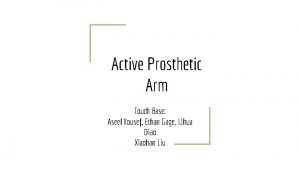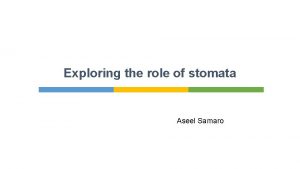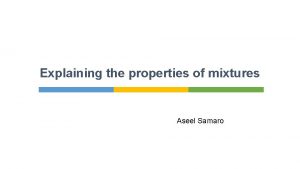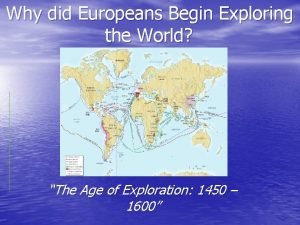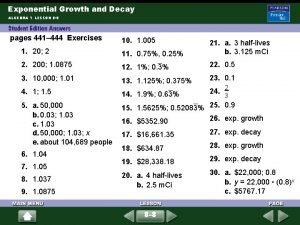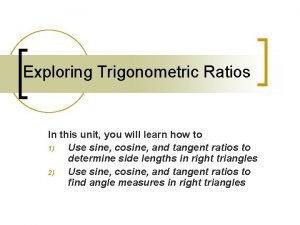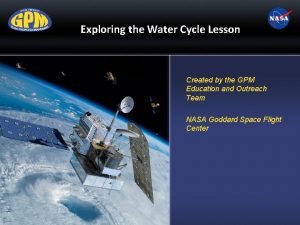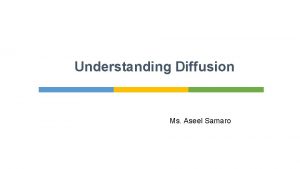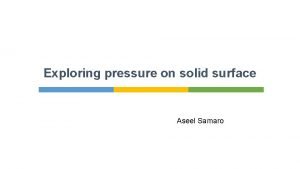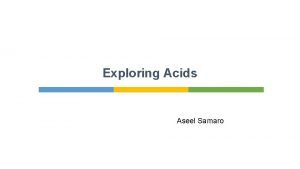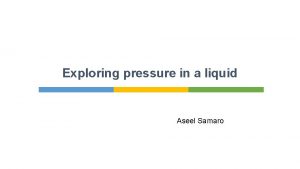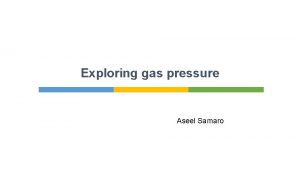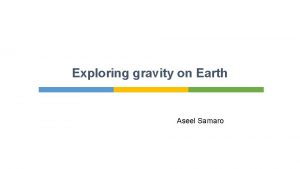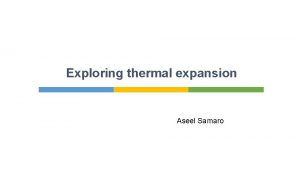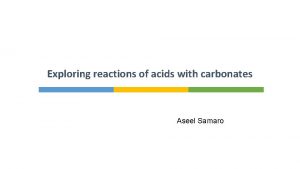Exploring diffusion Aseel Samaro Introduction Diffusion is a


















- Slides: 18

Exploring diffusion Aseel Samaro



Introduction § Diffusion is a process in which particles move and spread out. § Unsurprisingly, gas particles diffuse much faster than particles in other states of matter. § What makes diffusion so special?

Diffusion § Diffusion is a process by which substances move from an area of high concentration to one of low concentration, until the concentrations are equal.

Examples diffusion § Diffusion occurs because of the movement of particles in a gas or a liquid. § There is hardly any diffusion in solids because the particles cannot move freely. § Gas particles move faster and further than liquid particles, so diffusion in gases occurs faster than in liquids.

§ All smells spread as a result of diffusion. § When particles of a gas, like air freshener spray or odours from smelly socks, are released into the air, they spread out as far away from each other as possible. § These gas particles move through the air – when they reach your nose they are detected as a smell. § This is why we can detect smells from a long distance away.

§ If a drop of coloured ink is added to water, after several hours the colour will have spread through the water so that it is of equal concentration throughout.

Give another example of diffusion in everyday life. Why do smells become weaker the further you are from the source? there are fewer particles the further away you are from the source; they have spread out

Diffusion and particle model § Concentration is a measure of the number of particles packed in a certain volume. § Diffusion occurs because particles move from an area of high concentration to an area of low concentration, until there is no overall change in concentration. § We call this the point of equilibrium. The difference in concentration is known as the concentration gradient. § The higher the concentration gradient, the greater the rate of diffusion, and the quicker equilibrium is reached.

§ Temperature affects the rate of diffusion because it affects the energy of the particles. § The higher the temperature, the higher the kinetic energy of the particles, and the faster they move in such a way as to reduce the concentration gradient.

§ The rate of diffusion is faster when temperature is higher § If you try to make tea with cold water it takes a long time to brew. Cold water particles vibrate slower than hotter ones. § When you use hot water, the particles of water vibrate and move faster

If a drop of ink is added to some pure water, and a similar drop of ink is added to some dilute ink solution, in which solution would diffusion happen fastest? Explain your answer. the one with the ink in pure water; as it has biggest concentration gradient Think about these examples of diffusion. Which will reach equilibrium first and why? üPlacing a spoonful of coffee in 50 cm 3 of hot water üAdding a spoonful of cordial to 50 cm 3 of cold water

Explaining diffusion § Concentrated ammonia is placed at one end of the tube and concentrated hydrochloric acid at the other end. § Particles of ammonia are smaller than particles of hydrochloric acid. When the particles diffuse, they meet and react, forming a white cloud of ammonium chloride.


What would happen if the concentrated solutions were replaced by dilute solutions of both ammonia and hydrochloric acid? diffusion would occur much more slowly How else might the formation of the white ring be speeded up? Explain your answer. heat the tube; the particles will gain energy; and move more quickly Why doesn’t the white ring form in the centre of the tube? Ammonia particles are smaller; and will move faster than the hydrochloric acid particles; so they will meet the hydrochloric acid particles closer to where the latter have diffused from

Did you know…? § The animal kingdom is full of amazing examples of how animals make use of diffusion to smell odours. § Elephants can detect water sources up to 20 kilometres away.

Thank you
 How to identify pure aseel
How to identify pure aseel Aseel yousef
Aseel yousef Lab samaro
Lab samaro What is stomata
What is stomata Lab-samaro
Lab-samaro Samaro property
Samaro property Simple diffusion
Simple diffusion Relocation diffusion diagram
Relocation diffusion diagram Why did europeans begin exploring
Why did europeans begin exploring Exploring online planning and task management
Exploring online planning and task management Lesson 1 exploring conic sections
Lesson 1 exploring conic sections What motivates people to explore the unkown
What motivates people to explore the unkown Paradox ip exploring tools
Paradox ip exploring tools Section 11-3 exploring mendelian genetics answer key
Section 11-3 exploring mendelian genetics answer key Python for informatics: exploring information
Python for informatics: exploring information Practice 8-1 exploring exponential models answers
Practice 8-1 exploring exponential models answers Sine ratio formula
Sine ratio formula Exploring the water cycle
Exploring the water cycle Chapter 26 exploring the universe answers
Chapter 26 exploring the universe answers

